Report
Embarking on Circular Economy Journey and Methodologies Involved
Around the world, action is increasingly being taken to achieve global sustainability by making the most of finite resources, including through recycling and reuse along with the growing adoption of renewable energy sources.
Since its establishment by Hitachi, Ltd. and the National Institute of Advanced Industrial Science and Technology at AIST Tokyo Waterfront in October 2022, the Hitachi-AIST Circular Economy Cooperative Research Laboratory has been engaged in research aimed at achieving such a society.
The first open forum held in February 2024 addressed the questions of what a circular economy might look like in 2050 and the technological and institutional challenges to its achievement, debating these topics in the light of how this transition is progressing in Japan and elsewhere and the research being done at the laboratory.

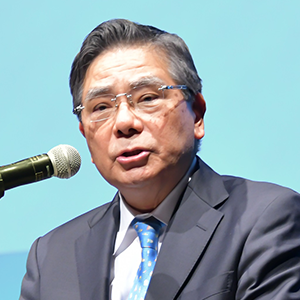 Kazuhiko Ishimura
Kazuhiko Ishimura
President and CEO, National Institute of Advanced Industrial Science and Technology
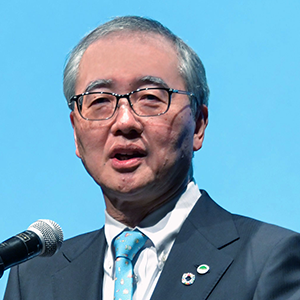 Keiji Kojima
Keiji Kojima
President & CEO, Hitachi, Ltd.
The concept of the circular economy (CE), a socioeconomic system that recycles the resources it uses as it generates new value, has attracted attention amid concerns about the depletion of the fossil fuels, minerals, and other resources on which people’s lives and businesses depend.
The Hitachi-AIST Circular Economy Cooperative Research Laboratory (H-AIST CE Lab.) researches how such societies can be created, and it was against this background that it held its first open forum in February 2024.
The forum opened with a welcome from President Kazuhiko Ishimura of the National Institute of Advanced Industrial Science and Technology (AIST). Touching on the three H-AIST CE Lab. research topics of “developing a grand design for a circular economy-based society,” “developing digital solutions to realize a circular economy-based society,” and “developing standardization strategies and proposing measures, he had the following to say about the work of AIST.
“AIST is a research institution with a mission of resolving societal challenges and boosting industrial competitiveness. If we are to achieve these goals, it is vital that the results of our work be put into practice in the form of products, services, etc. The National Innovation EcoSystem involves companies, universities, and public institutions working together to deliver innovation. To achieve this, 20 laboratories prefixed with company names are currently active in our organization. H-AIST CE Lab. is one of these. Through research and development that is more closely attuned to company needs, we will accelerate the practical implementation of technologies and solutions.”
Next to speak was Keiji Kojima, President & CEO of Hitachi, Ltd., who noted how the world is seeing a fall in the volume of resource extraction and that the allocation of resources globally is becoming difficult. He talked about his hopes for the work of H-AIST CE Lab., saying, “Amid rising uncertainty in supply chains, CEs can be seen as the only way for the global economy to thrive. In its role as an enabler, I hope that H-AIST CE Lab. will communicate the Japanese model of what a CE is and offer a variety of solutions that contribute to the CE of Society 5.0.”
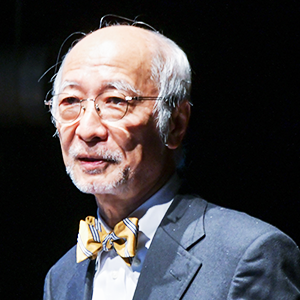 Eiji Hosoda
Eiji Hosoda
Vice Chancellor for Humanities and Social Science and Professor, Department of Economics, Tokai University
Next was a special presentation by Professor Eiji Hosoda, Vice Chancellor for Humanities of Tokai University who teaches in the School of Political Science and Economics. Professor Hosoda said that CEs represent a fundamental rethinking of capitalism. Noting that this transition is built on foundations that span a range of countries and regions, he spoke about the differences between CE policies in the European Union (EU) and Japan. He also made the point that we need to lay out a macro vision for what such societies should look like, and that industry, government, academia, and the public will need to work on this together if CEs are to be realized in the future.
While there are many different definitions of the CE, reducing as far as possible the economic system’s use of natural resources is generally seen as the starting point. Furthermore, the resources that go into an economic system should be reused rather than being disposed of, improving value-add productivity for resources through upcycling as well as through reuse and recycling so that the volume disposed of in landfill ultimately trends down to zero. This is the goal.
Unfortunately, this cyclic process cannot be achieved by market economics alone. Rather, what is needed is harmonization of institutional infrastructure and the foundations of society in terms of both hard law and soft law, putting practices in place that bring the “arteries” and “veins” of an economy together in collaboration.
In this context, a look at what is happening around the world shows that the EU has adopted top-down methods for achieving a CE, proclaiming lofty and abstract concepts and then manifesting these as specific directives and rules. Japan, on the other hand, has addressed resource recycling by building up a portfolio of practical policies stretching from the Circular Economy Vision 1999 to the Japan Partnership for Circular Economy in 2023, having put a number of recycling laws in place since the “reuse, reduce, recycle” (3R) concept came out in the 1990s.
Here, it is the technological requirements that need to be addressed first if the market economy and institutional infrastructure are to be brought together to achieve a sustainable CE, meaning the technologies required for the advanced recycling and reuse of resources. Furthermore, putting these technologies to use involves institutional requirements in the form of private sector organizations and industry initiatives with a focus on sustainability and practices that facilitate coordination and collaboration based on the legal system. Also needed are workforce skills (human requirements) and practices that enable competition and collaboration to coexist (economic requirements).
What is important for coordinating these different requirements are two forms of “tripartite innovation.”
The first of these is tripartite innovation at the corporate organization (micro) level consisting of technological innovation, institutional innovation, and human innovation.
The second is tripartite innovation at the economy-wide (macro) level, which involves technological innovation, but also includes economic innovation and innovation in the institutional infrastructure.
While the market links these two forms of tripartite innovation together, as noted earlier, the market alone will not deliver a CE in which the arterial and venous industries are integrated. The key question when it comes to coordinating these different forms of innovation is how to get industry, government, academia, and the public working together in partnership so that the flow of knowledge can translate into the recycling of resources. CE cannot be realized if industrial policy is left to national and local governments, as it has been in the past.
This involves building a CE that serves both public and private interests, with the technologies for CE being actualized by having all of the actors, including industry, government, academia, and the public, work together on formulating a macro vision that will in turn guide their micro actions. It is believed that such an approach will play to Japan’s strengths in coordination and collaboration.
In the session that followed, H-AIST CE Lab. Director Katsumasa Miyazaki gave an overview of the laboratory’s activities that was followed by reports on the research being done and the outcomes delivered on the three topics of: “Developing a grand design for a circular economy-based society,” “Developing digital solutions to realize a circular economy-based society,” and “Developing standardization strategies and proposing measures.” The presentations are summarized below.
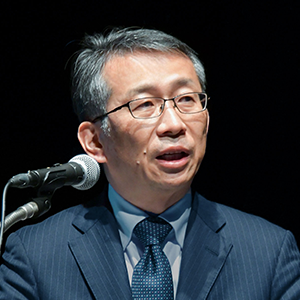 Katsumasa Miyazaki
Katsumasa Miyazaki
Director, Hitachi-AIST Circular Economy Cooperative Research Laboratory, National Institute of Advanced Industrial Science and Technology
Before introducing an overview of the laboratory’s activities, H-AIST CE Lab. Director Katsumasa Miyazaki touched on the challenges to society posed by the growth in resource consumption that accompanies economic growth and the rise in commodity prices driven by the international situation and the uneven distribution of resources. He also highlighted the need to switch away from the linear growth of the past that was predicated on products being both produced and disposed of in high volume and to instead develop CEs that prioritize resilience with a low load on the environment.
He noted that different countries are seeking to achieve CEs in a variety of different ways, including the regulatory-driven approach of Europe, the US approach driven by leading businesses, and the state-led approach in China. In Japan, meanwhile, the challenges posed by its efforts to realize a CE through collaboration between industry, government, and academia can be broadly divided into the following three key issues.
H-AIST CE Lab. is addressing these challenges under the topics of “developing a grand design for a circular economy-based society,” “developing digital solutions to realize a circular economy-based society,” and “developing standardization strategies and proposing measures.” In doing so, it is formulating CE policies that bring stakeholders together and communicating a path to a desirable future and the methods for getting there.
Director Katsumasa Miyazaki proposed that the information and knowledge that serves as a resource in Society 5.0 should be included as one of the three types of resources targeted for cyclic use, the other two being materials and energy. He added that Society 5.0 represents an era in which these resource categories, previously considered independent, start to interact strongly, saying he looks forward to the formulation of a grand design for creating a human-centric society that makes the most of these resources with a high level of recycling.
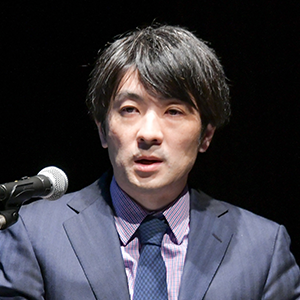 Masahide Ban
Masahide Ban
Manager, UX Design Department, Design Center, Research & Development Group, Hitachi, Ltd.
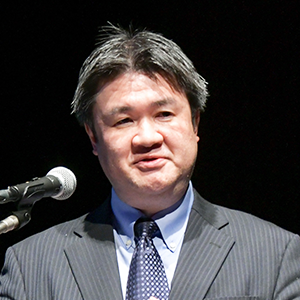 Shinichiro Morimoto
Shinichiro Morimoto
Team Leader, on Research Center, Department of Energy and Environment, National Institute of Advanced Industrial Science and Technology
One of the research topics being pursued by H-AIST CE Lab. is the formulation of a grand design to guide the development of the digital solutions and standardization strategies that will be essential for realizing a CE. The grand design in this research is seeking to develop a vision for the desired future, a roadmap for getting there, and indicators of progress in multiple layers. These layers consist of materials, energy, and information and knowledge, from the earth to business and individual activities. In this instance, Masahide Ban of Hitachi, Ltd. and Shinichiro Morimoto of AIST described the scoping and future scenario analysis processes that form part of this research. From a set of 12 “hot topics” associated with CE-based societies, they chose to address “economic security and the international division of labor in manufacturing” and “regional circulation models and ecosystems.” They have commenced scenario analysis using the first of these as a starting point. This has involved four brainstorming sessions with participation by experts who are representative of Japan and a facilitator familiar with both scenario planning*1 and CE. These explored future scenarios by looking at how Japan can strengthen its industrial competitiveness by moving to a CE and how to create environmental as well as economic value. The following four future scenarios for manufacturing were created from this brainstorming.
H-AIST CE Lab. is currently digging more deeply into these four future scenarios to develop a conceptual image of the desired future. A publication describing the work to date is planned by the end of FY2023.
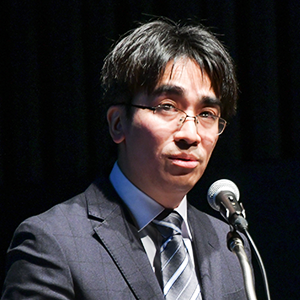 Ippei Kono
Ippei Kono
Chief Researcher, Circular Industries Research Department, Production Engineering and MONOZUKURI Innovation Center, Research & Development Group, Hitachi, Ltd.
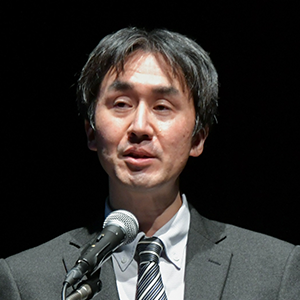 Yoshiyuki Furukawa
Yoshiyuki Furukawa
Team Leader, Industrial Cyber-Physical Systems Research Center, Department of Information Technology and Human Factors, National Institute of Advanced Industrial Science and Technology
Work is progressing on initiatives for linking data across different companies to provide a view into all aspects of corporate activity, including stakeholders. In the case of CE, this is about more than just providing transparency, with the use of data to make active improvements in behavior playing an important part in bringing about a CE.
In this presentation, Ippei Kono of Hitachi, Ltd. and Yoshiyuki Furukawa of AIST talked about what H-AIST CE Lab. is hoping to achieve with digital solutions, explaining their development practices and giving examples of this work.
Through the development and use of cyber-physical systems (CPSs), H-AIST CE Lab. is seeking to create a society in which people are encouraged to make the move toward a CE on their own initiative, with digital technologies being used to make valid judgments on the activities of consumers and other stakeholders, and by using this information appropriately as feedback. By collecting, evaluating, and analyzing data from the product life cycle in physical space, this can make information about goods, energy, and economic movements available in cyberspace so that this information and knowledge can be used to suggest improvements and also to encourage behavioral improvements in society itself.
H-AIST CE Lab. has run workshops to discuss example applications of CPSs, the value delivered to stakeholders, and how the systems are to work. These have come to the conclusion that putting these CPSs into practice will require mechanisms for the ongoing collection and sharing of data as well as choosing the best possible methods of achieving circularity that are both economically rational, and do not place a heavy burden on the environment. To this end, the laboratory has chosen two development topics and is working on the development of value-adding solutions that address both resource circularity and the economic interests of stakeholders. The first topic is the use of life cycle simulations to assess economic and environmental value by modeling business activities and the flow of goods based on domain knowledge and data. The other is the digitalization of the “vein-like” recovery, disassembly, and reuse activities associated with the circular movement of goods around the economy, thereby enabling the ongoing collection of real-world data.
The latter half of the presentation described a case study of a CE simulation in which, rather than outer-loop recycling, volume was increased thorough the tighter loop of remanufacturing. This was done by creating routes that facilitate reuse and remanufacture by having recyclers collect products and parts and return them to the vendor. The results of the simulation indicated that, under the assumed conditions, savings of about 10% could be achieved on material consumption and the CO2 emissions of purchased inputs, with a higher gross profit for both the product manufacturer and the company that handled the recovery and disassembly. The laboratory hopes to improve accuracy and use the simulation to explore possible growth businesses with stakeholders.
H-AIST CE Lab. intends to continue with development and other studies aimed at the practical deployment of digital solutions, aiming to utilize its capabilities to drive a societal transition to a CE while also making use of technologies such as generative artificial intelligence (AI) and quantum computing.
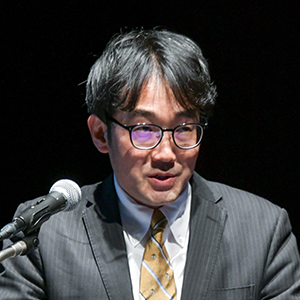 Osamu Hoshino
Osamu Hoshino
Head of Chief Architect Office, Technology Strategy Office, Research & Development Group, Hitachi, Ltd.
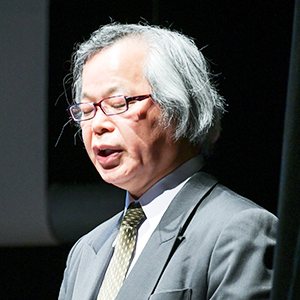 Koshi Kamigaki
Koshi Kamigaki
Standardization Officer, Standardization Promotion Office, Intellectual Property and Standardization Promotion Division, Planning Headquarters, National Institute of Advanced Industrial Science and Technology
While Japan has led the world in environmental policy with its 3Rs, there are concerns that it will be unable to adapt to the transition to a European-led international CE and that the associated rules will disadvantage Japan. This means that, if Japan is to grow globally and sustainably as a CE, companies will need to adopt a proactive approach to CE rule-making and international standardization.
In this presentation, Osamu Hoshino of Hitachi, Ltd. and Koshi Kamigaki of AIST described the current issues, the approach they are taking to developing standardization strategies and proposing measures, and the trends in rule-making and other points of note.
To help Japanese companies become more internationally competitive, H-AIST CE Lab. is pursuing a combined defensive and offensive strategy, keeping up to date with what is happening in CE rule-making and engaging in work on analysis, countermeasures, and standardization. The defensive strategy involves anticipating trends in Europe, the region at the forefront of CE, and being quick to incorporate these insights into business practice, while the offensive strategy is about taking the initiative with its own and other rules originating from Japan.
In doing so, H-AIST CE Lab. is looking at CPSs in terms of digital and green considerations as it seeks to acquire a broad overview that encompasses developments in international standardization. As a result, while Europe is taking the lead in constructing the data space, the laboratory has been working on the hypothesis that it can make up for lost time by engaging with Technical Committee 323 of the International Organization for Standardization (ISO/TC323), the organization with primary responsibility for CE standards. This work at ISO/TC323 involves proposing CE standards that include the quality management of used products and a common data dictionary (CDD) that enables rapid standardization.
To demonstrate this hypothesis, the laboratory drew on the results of surveys and analyses of market trends in Japan and elsewhere conducted since 2023 to conclude that the use of grading*2 held promise. Grading encourages the flow of information and knowledge by providing transparency about the value of the resources being recycled within sectors and across different industries. Accordingly, it made a proposal to ISO/TC323, the organization responsible for CE standardization, on the requirements that grading needs to satisfy. It also formulated product-specific and material-specific on-line standards by means of a standard as database (SDB) that enables rapid standardization. By doing so, the laboratory believes that it has made up lost time in the field of international CE standardization while also carving out a space in which Japanese companies can actively engage with the CE. To achieve this, however, it will also be important to expand the grading framework so that it also encompasses remanufacturing and repair and to standardize the associated economic indicators.
In this regard, while CE indicators for reducing use of natural resources and making more use of recycled materials have been put forward from around the world, the Japanese manufacturing industry is likely to have a hard time in this area given how little control it has over resources. In response, the laboratory is investigating indicators that can appropriately measure efforts to extend the life of equipment or other products. These represent a new type of indicator for measuring annual recycling performance by companies and other organizations that will allow for a soft landing on the CE, one that, given the preponderance of manufacturing at Japanese companies, will avoid inflicting the rapid increases in costs and investment that come with greater use of recycled materials.
H-AIST CE Lab. also intends to strengthen its networks to facilitate work on standardization in partnership with ISO/TC323 and other technical committees, including by consulting with overseas influencers in the CE field and standardization experts.
These reports on the work of H-AIST CE Lab. were followed by a panel of six experts who discussed the topics of: (1) How can the CE be used to strengthen Japan’s industrial competitiveness?, and (2) What standardization and rule-making will be needed to create a CE-based society?
The first half of the session was taken up with the panelists sharing their insights into these two topics by each giving a short presentation based on past studies. This was followed by a discussion of the topics led by the two moderators, Ken-ichi Miyamoto, a Deputy General Manager at the Business Coordination Department of AIST Solutions Co. and Shinichi Taniguchi, a Senior Manager at the Circular Industries Research Department of Hitachi’s Research & Development Group.
Moderator
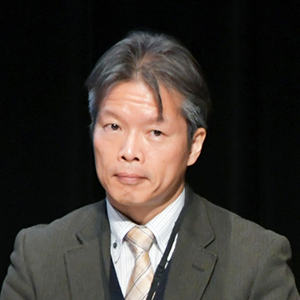 Ken-ichi Miyamoto
Ken-ichi Miyamoto
Deputy General Manager, Business Coordination Department, AIST Solutions Co.
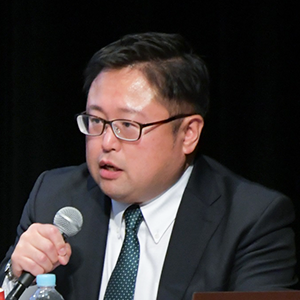 Shinichi Taniguchi
Shinichi Taniguchi
Senior Manager, Circular Industries Research Department, Production Engineering and MONOZUKURI Innovation Center, Research & Development Group, Hitachi, Ltd.
Panellists
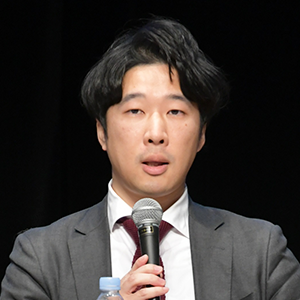 Yasuhiro Yoshikawa
Yasuhiro Yoshikawa
Deputy Director, Resource Efficiency and Circular Economy Division, Ministry of Economy, Trade and Industry
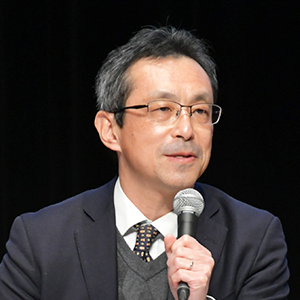 Yasushi Umeda
Yasushi Umeda
Professor, Research into Artifacts, Center for Engineering, School of Engineering, The University of Tokyo
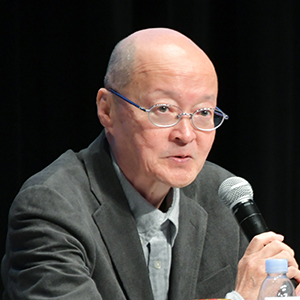 Yoshiaki Ichikawa
Yoshiaki Ichikawa
Visiting Professor, Tama University, Convenor of ISO/TC323/WG2
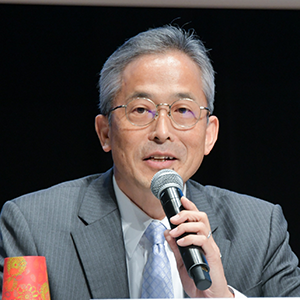 Hiroyuki Sato
Hiroyuki Sato
Vice Chairman and Chief Engagement and Partnerships Officer, Amita Holdings Co., Ltd.
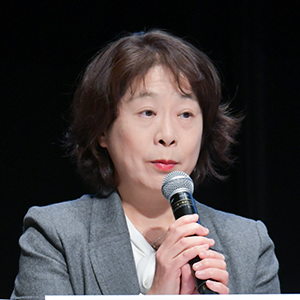 Miyuki Takenaka
Miyuki Takenaka
Chief Engineer, Hitachi High-Tech Corporation, Chair of IEC/TC 111
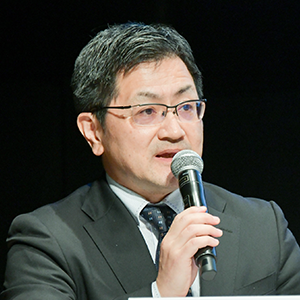 Keijiro Masui
Keijiro Masui
Deputy Director, Hitachi-AIST Circular Economy Cooperative Research Laboratory, National Institute of Advanced Industrial Science and Technology
TaniguchiAmid shifts in global supply chains and in the international division of labor in manufacturing, how should Japan use the CE as a basis for boosting industrial competitiveness while maintaining resiliency?
YoshikawaWhile the CE offers opportunities to use Japan’s manufacturing and recycling technologies, there are areas where the mechanisms for doing so are not yet in place. In the past, each stage of the life cycle has seen more of the information on a product or material being leeched away, through design, manufacture, sale, use, recovery, and recycling. The result is that incineration ends up as the only option. As a resource-poor nation, Japan needs to extract valuable materials from products and upcycle them for reuse, and this in turn calls for traceability. The key question for the future is how we can revise the rules and utilize digital technologies to put such practices in place, and how quickly we can have them up and running.
UmedaWhile Japan possesses individual technologies, I believe we have a crucial weakness when it comes to changing how we go about successfully combining these for business and value delivery. When it comes to designing goods in a way that considers their entire life cycle, it is important to have the agility to try things out and to proceed by trial and error.
SatoAlthough I often make work visits to Asia, I am sad to say that Japanese industry does not have a large presence in the CE field. While we have an advantage in quality and in perceptions of safety, that is not enough on its own and what is needed are systems in which practices and services come as a package that works across supply chains. I believe that Japan’s industrial competitiveness can be improved by having industry, government, and academia first work together to develop the practices and then taking these overseas.
MasuiAppliance recycling already has standards that apply to individual product designs, covering things like design for recycling, material uniformity, and ease of disassembly and sorting. When you look at how circular design and conventional design for recycling differ from one another, it lies in the need for improvements and strategy at a higher level. Rather than design based on the life cycle and nature of the product concerned, what matters in a CE, I believe, is to take a strategic approach to the design of the life cycle itself that encompasses recyclability, longer useful life, and reduced resource inputs. Accordingly, it is important that data tracing a product’s actual life-to-date is passed on to the subsequent steps in its life cycle, and we also need to strengthen the areas of data cross-referencing and traceability from the unwanted goods collection stage to enable data collection by recycling businesses (those that act like veins).
MiyamotoPlease tell me your views on future standardization and rule-making, including collaboration between ISO/TC323 and Technical Committee 111 of the International Electrotechnical Commission (IEC/TC111).
IchikawaTwo important considerations in standardization are: what is it intended to achieve and will it allow us to build economic models that work for Japan? While we may use the same term, what Europe and Japan are trying to achieve with the CE are different. Whereas it seems that Europe is looking to become less reliant on manufacturing with a shift in emphasis toward services like finance where they have advantages, in Japan and the Association of South‐East Asian Nations (ASEAN) it is manufacturing that serves as the basis for adding value. This means we cannot accept models for CE that involve giving up on manufacturing. In this regard, we need to be cognizant that what we want from the CE and what Europe wants are not the same thing. Rather than past design practices for reuse and recycling, I believe we need to work together at the IEC and ISO on circularity design that increases the value added by manufacturing without wasting resources, and on the design of entire value chains.
TakenakaThe most important strategy for standardization is to ask what it is you are standardizing. As infrastructure for recycling varies widely between countries and regions, it is not good enough for standards simply to adopt the practices used in Europe. On the other hand, specific numerical targets for things like the percentage of parts that are reused or remanufactured can be very influential. When it comes to how agreed standards or calculation formulas can benefit us and how they can be made into indicators for CE, I believe it is vital that rule-making be based on collaboration between industry, government, and academia.
MasuiI expect that technological verification and development work will be needed when deciding on numerical targets like reuse percentages that have not previously existed. As was touched upon in one of the earlier activity reports, grading is one of the key considerations in the use of recycled materials. While past accounting for recycling rates has often been weight-based, quality will also matter in the future and so we can expect to see a wider variety of formulas being used to calculate value.
YoshikawaWhile what we are asking of the recycling industry (veins) is to produce high-quality recycled materials from a mix of products of widely varying ages and from different vendors, this reuse will prove difficult unless they know what materials are used in those products. This makes it important to standardize designs at the production (arterial) stage. What is also needed are communication tools that will enable these “arteries” and “veins” to each determine what they need. To this end, it is important that we take a measured approach to standardization and consider how Japan can play to its strengths while also fostering mutual understanding with overseas participants. On behalf of the others involved, we are looking forward to getting to work on this.
The panel discussion concluded by opening for questions from the floor about CE and the activities of H-AIST CE Lab. This provided an opportunity for further discussion as well as for people to share thoughts on the current challenges for achieving a CE and how best to proceed.

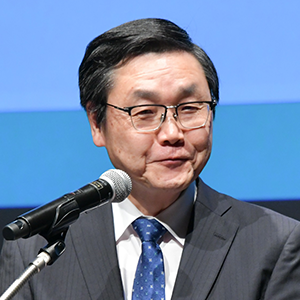 Norimitsu Murayama
Norimitsu Murayama
Senior Vice-President and CTO, National Institute of Advanced Industrial Science and Technology
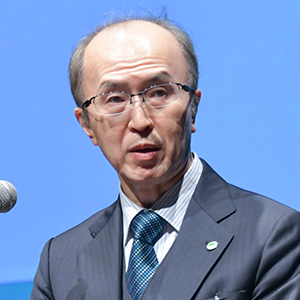 Itaru Nishizawa
Itaru Nishizawa
Vice President and Executive Officer, CTO, and General Manager of the Research & Development Group, Hitachi, Ltd.
The closing address was given by Norimitsu Murayama, Senior Vice-President and CTO of AIST. He thanked the audience and presenters, going over the topics covered by the day’s program and talking about the future work of AIST.
“In addition to H-AIST CE Lab., AIST is also working with many other companies on creating a CE. To assist with setting the technology development targets required for a CE, we published a specification roadmap in November 2022 for the technologies needed to make recycling integral to society. This reviewed the levels of technology that would be needed in 2030 or 2050 for upgrade recycling, chemical recycling, and other such means for reusing materials. The roadmap is posted on the AIST website and I hope that it will prove useful to companies and research institutions. We also hope, in the near future, to be able to publish the CE strategies we have developed. Moreover, AIST Group intends to continue working together toward the practical realization of a CE, including AIST Solutions Co., which was established in April 2023.”
Itaru Nishizawa, Vice President and Executive Officer, CTO, and General Manager of the Research & Development Group at Hitachi, Ltd. concluded with the following comments, recounting the three research topics being studied at H-AIST CE Lab. and the matters raised in the panel discussion.
“One thing that has been made clear to me from the presentations and discussions at today’s forum is that, rather than strengthening efforts in particular areas, a CE-based society is one that can only come about through the pursuit of benefits across all industries. I recognize how important it will be to future sustainability that we achieve a CE and a prosperous way of life that enjoys economic growth while also being kind to the environment. Although not yet ready, the laboratory plans to publish a proposal document that reflects the presentations and discussions that have taken place today. I hope you will be able to read it and give us your thoughts. I look forward to your ongoing understanding and cooperation with the activities of H-AIST CE Lab.”